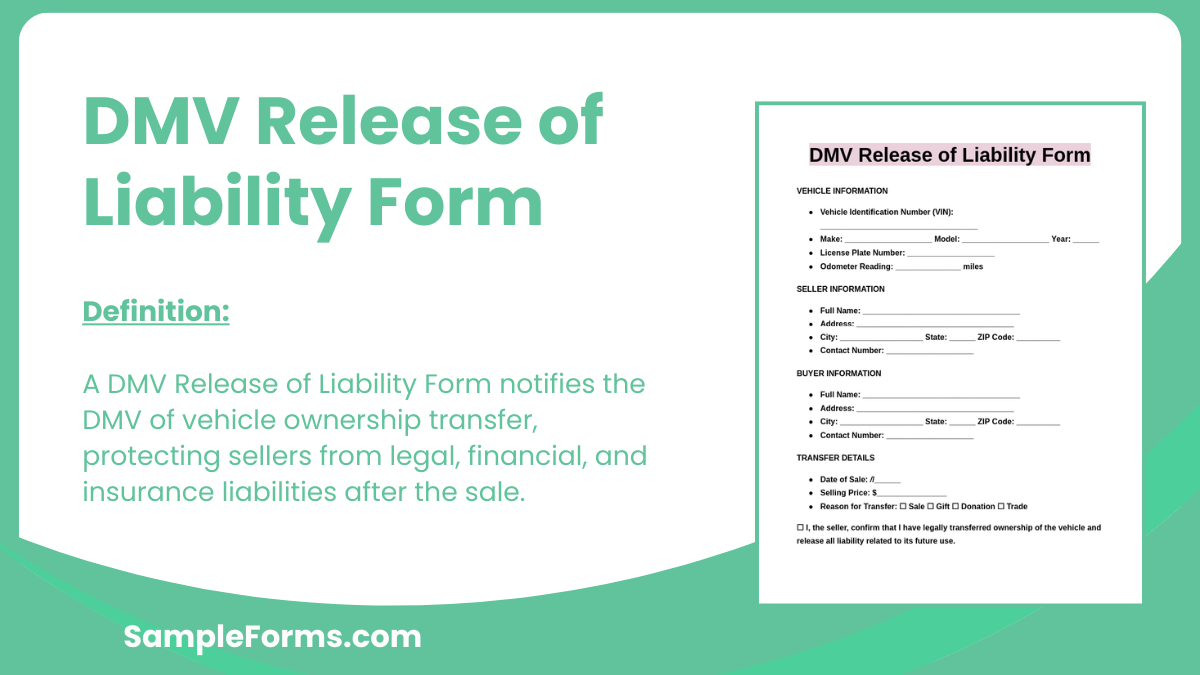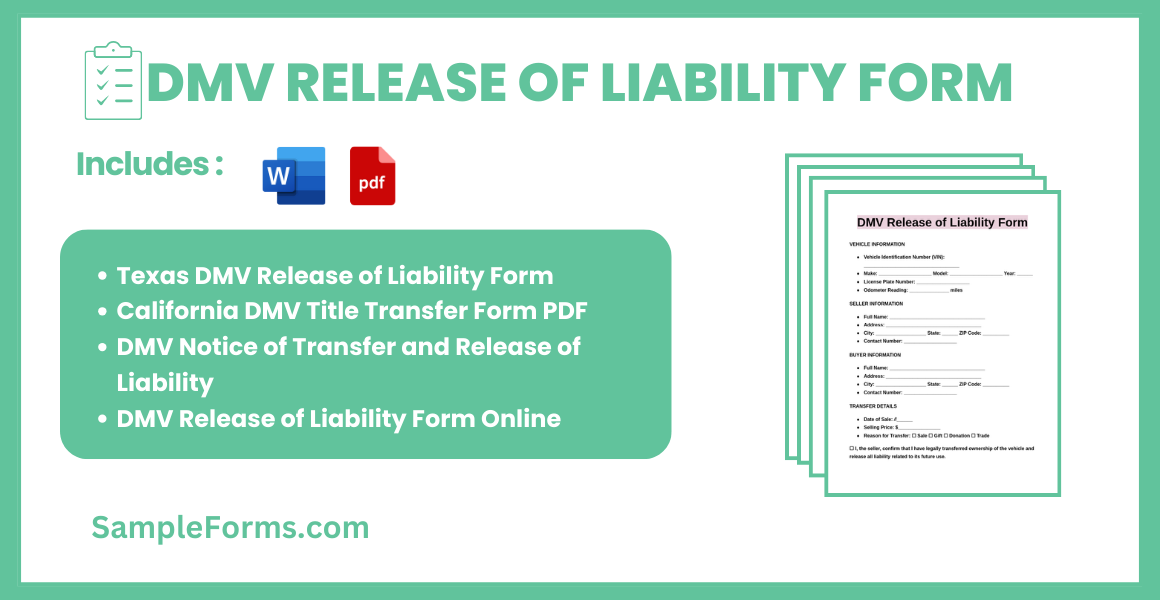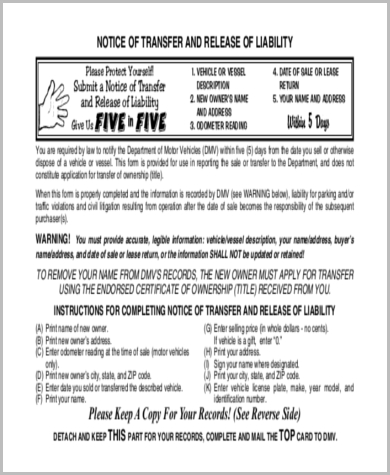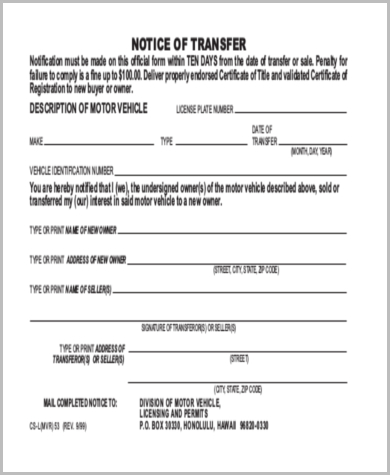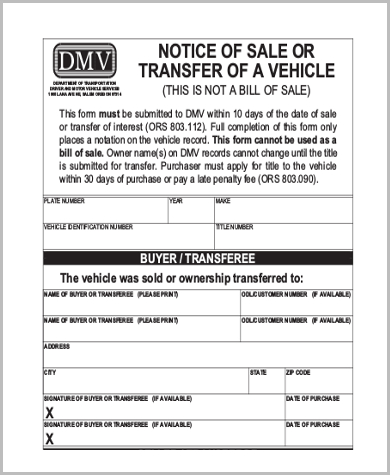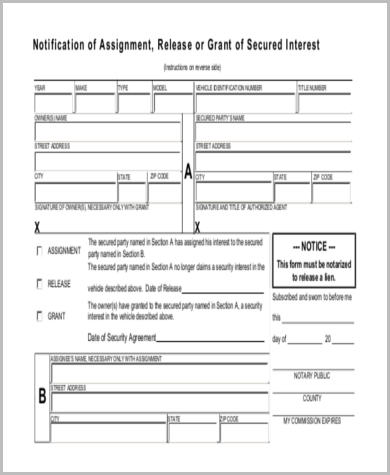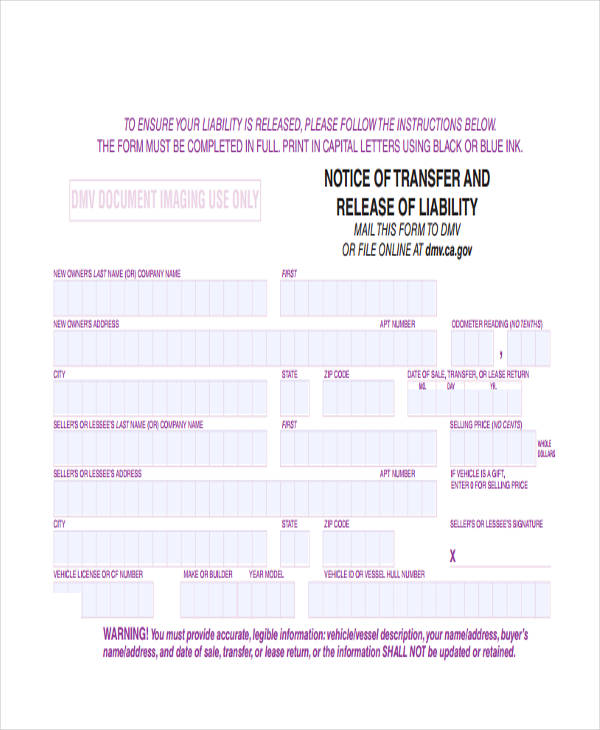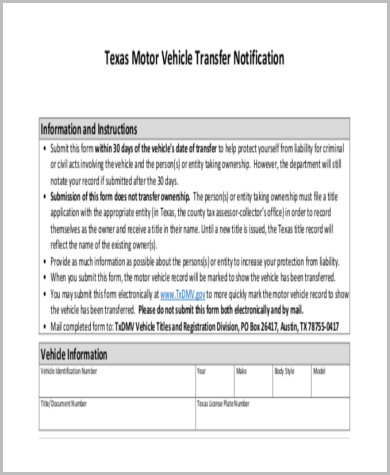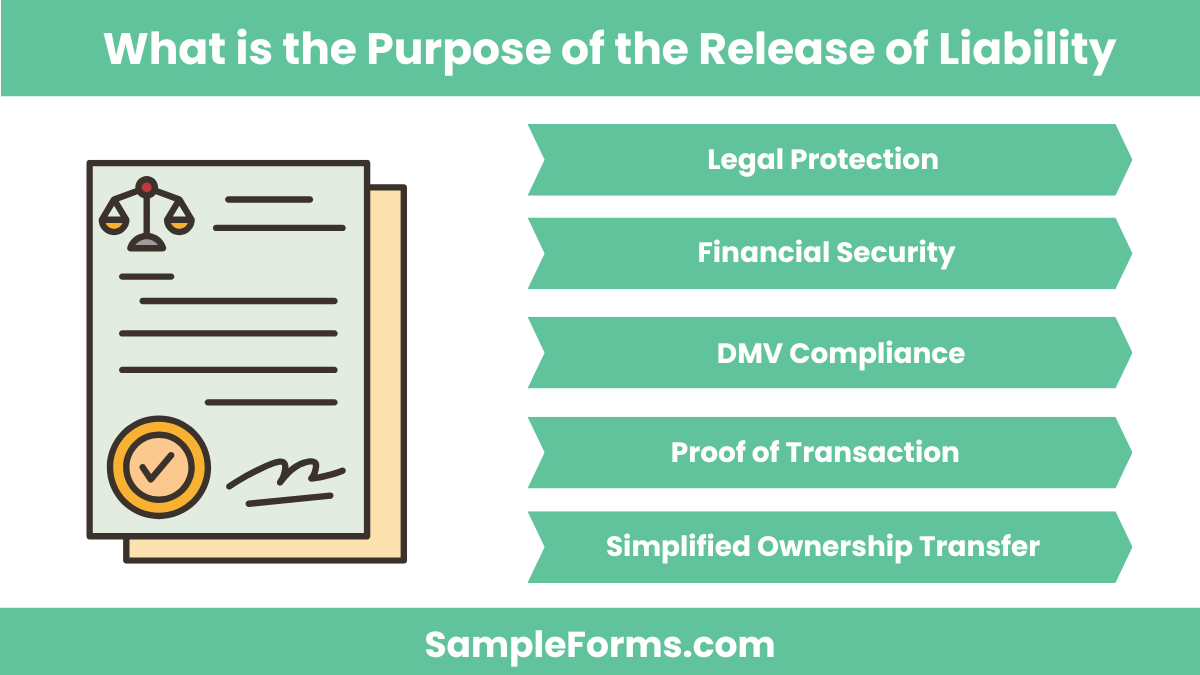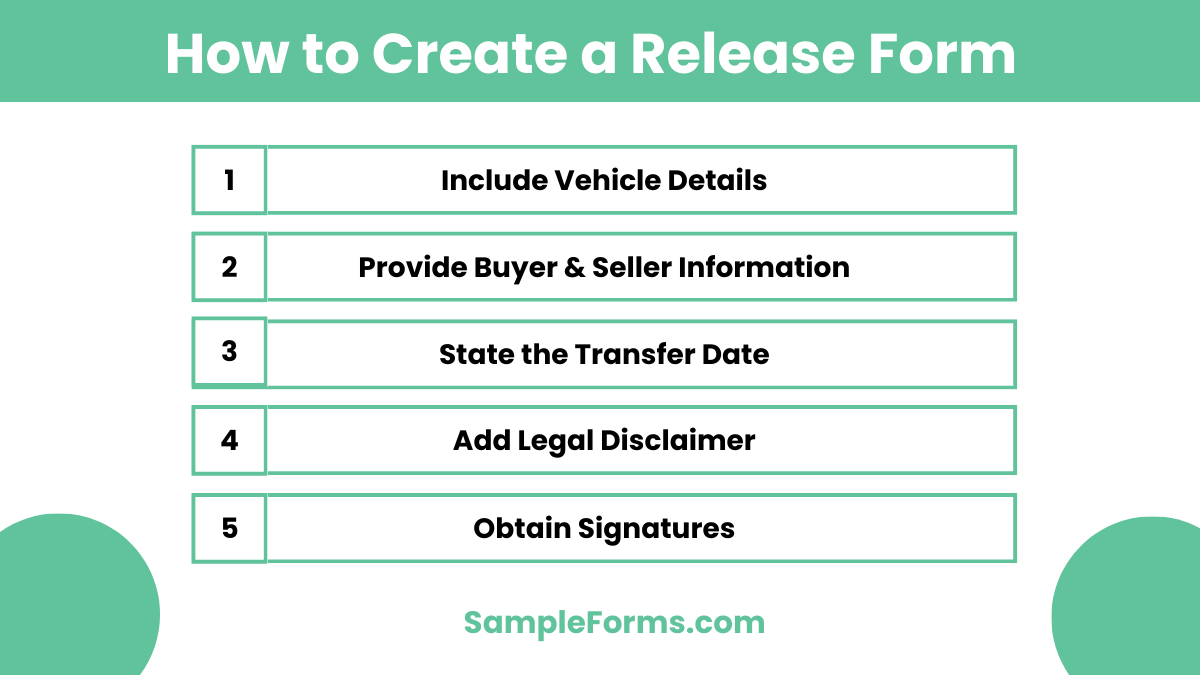A DMV Release of Liability Form is crucial when selling or transferring a vehicle. This Release Form protects the seller from future legal or financial responsibilities related to the vehicle after ownership is transferred. It notifies the Department of Motor Vehicles (DMV) that the seller is no longer liable for parking tickets, toll violations, or accidents involving the vehicle. Filing this form promptly ensures that all ownership changes are legally recognized, preventing disputes. This guide covers how to fill out the form, submission requirements, and best practices for a smooth title transfer.
Download DMV Release of Liability Form Bundle
What is DMV Release of Liability Form?
A DMV Release of Liability Form is an official document used to notify the DMV that a vehicle has been sold or transferred. It protects the previous owner from any financial or legal responsibility for incidents involving the vehicle after the sale. This form typically requires details such as the vehicle’s make, model, year, VIN, and the buyer’s contact information. Once submitted, it ensures that all liability is shifted to the new owner, preventing disputes over fines, accidents, or other legal matters related to the vehicle.
DMV Release of Liability Format
Vehicle Information
- Make and Model
- Year
- VIN (Vehicle Identification Number)
- License Plate Number
Seller Information
- Full Name
- Address
- Contact Number
- Driver’s License Number
Buyer Information
- Full Name
- Address
- Contact Number
- Driver’s License Number
Transfer Details
- Date of Transfer
- Sale Price (if applicable)
- Odometer Reading
- Liability release confirmation
Signatures and Authorization
- Seller’s Signature and Date
- Buyer’s Signature and Date
- DMV Representative (if required)
Texas DMV Release of Liability Form
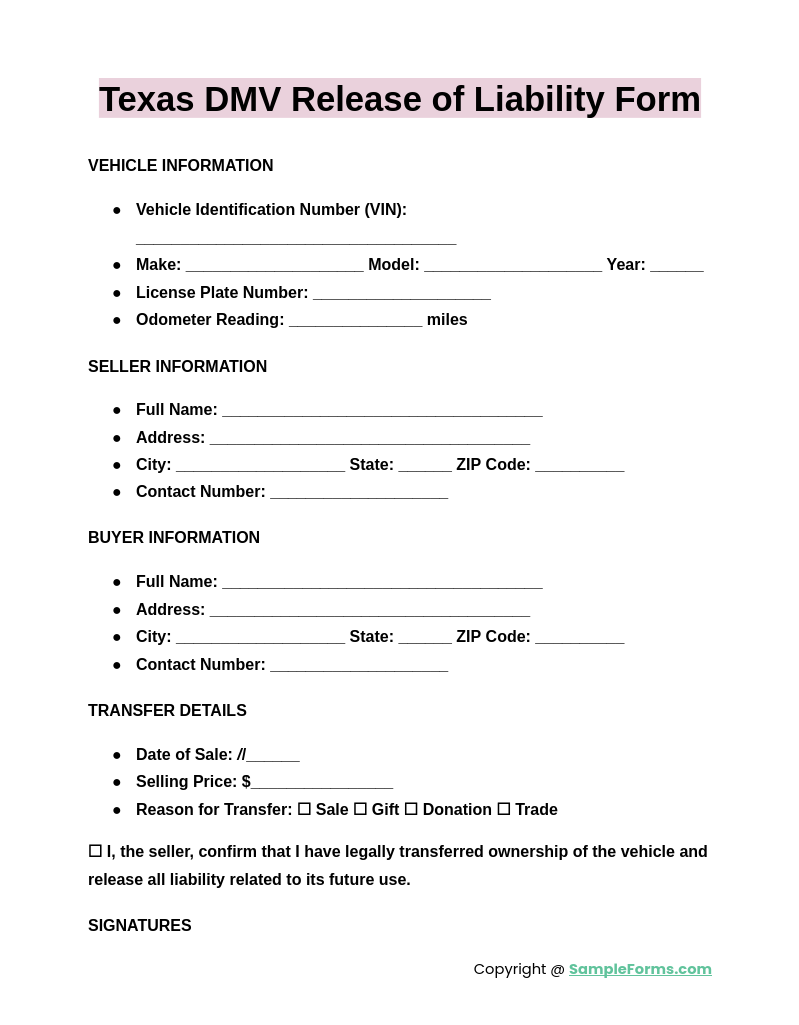
A Texas DMV Release of Liability Form is essential for legally transferring vehicle ownership. Similar to a Liability Waiver Form, it notifies the DMV that the seller is no longer responsible for the vehicle after the sale.
California DMV Title Transfer Form PDF
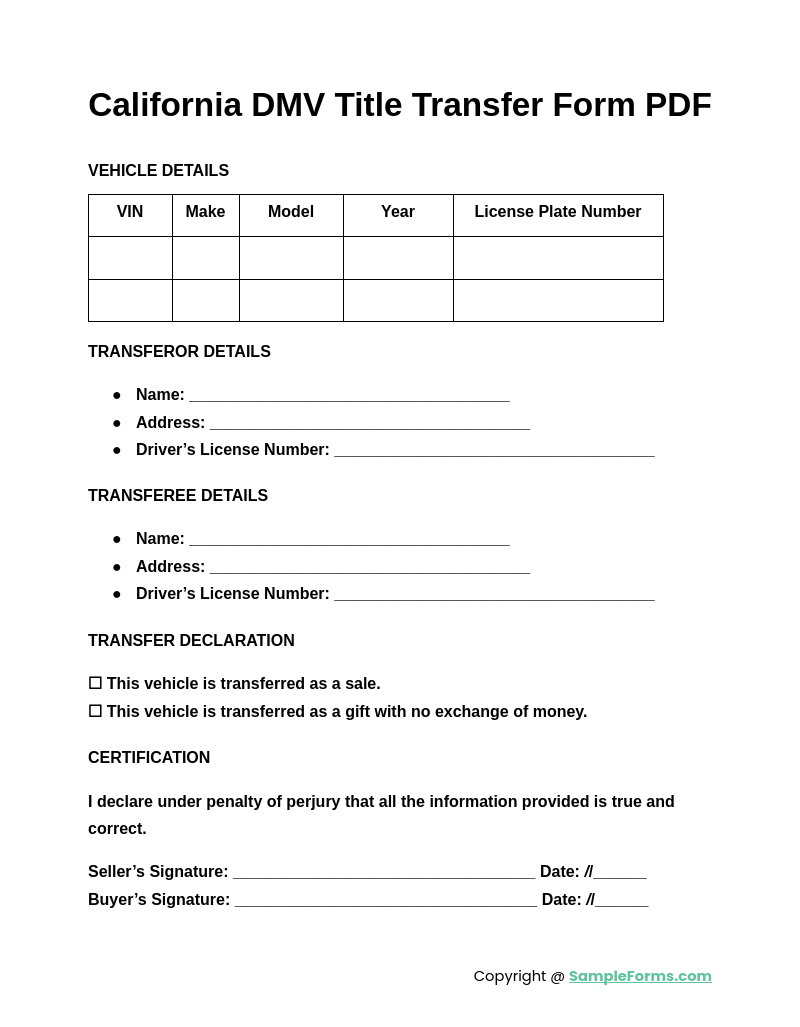
A California DMV Title Transfer Form PDF documents vehicle ownership changes in California. Like a Certificate of Liability Insurance Form, it ensures legal compliance by officially recording the transfer and protecting both buyer and seller from future disputes.
DMV Notice of Transfer and Release of Liability
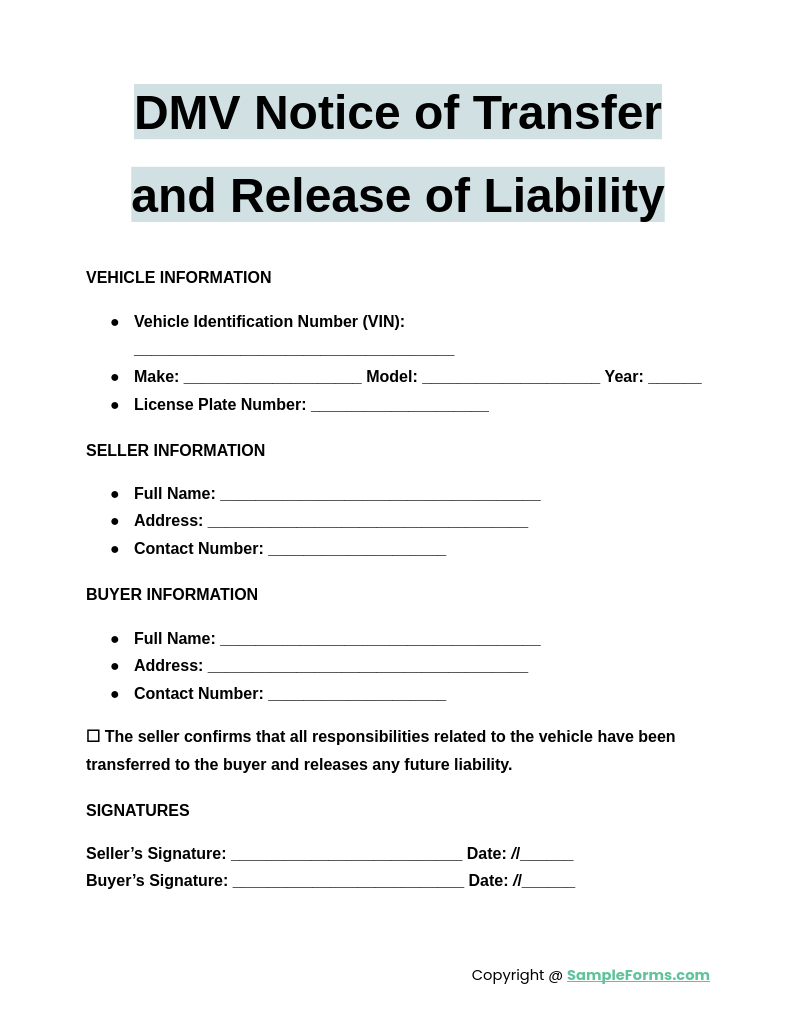
A DMV Notice of Transfer and Release of Liability is used to inform the DMV of vehicle ownership changes. Similar to a Release of Liability Form, it prevents legal responsibility for accidents, tickets, or penalties after the vehicle is sold.
DMV Release of Liability Form Online
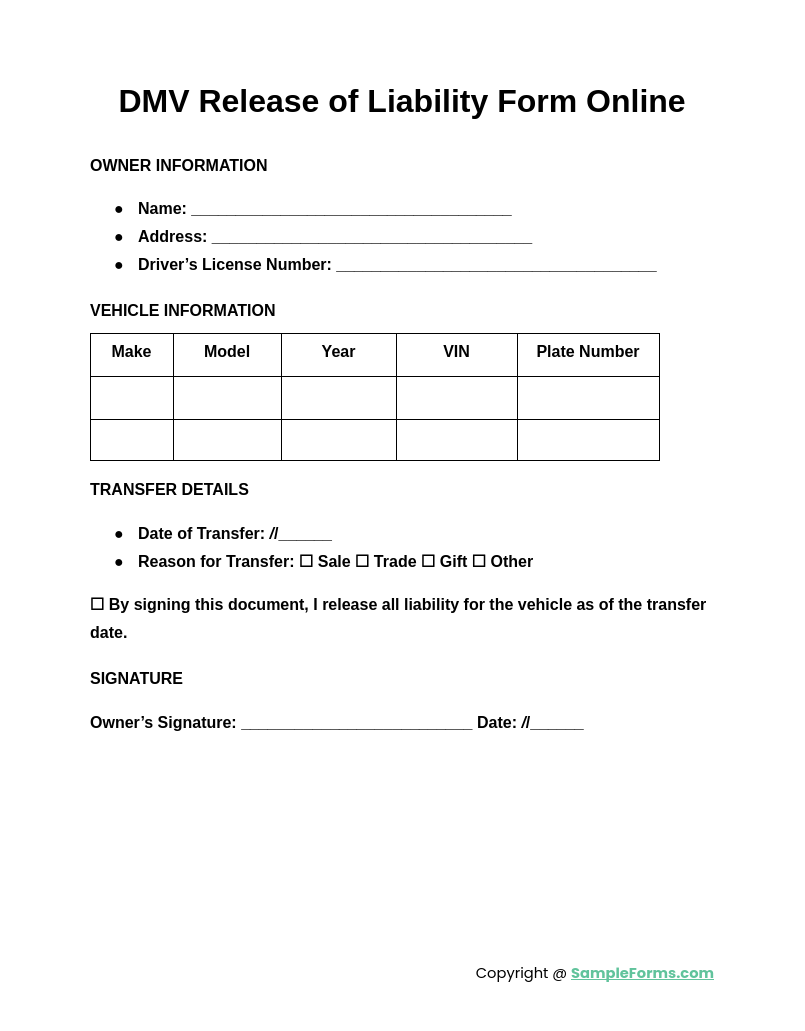
A DMV Release of Liability Form Online allows sellers to submit ownership transfers electronically. Like a Waiver of Liability Form, it ensures the previous owner is legally free from responsibility once the vehicle is registered under the new owner’s name.
Browse More DMV Release of Liability Forms
DMV Release of Liability Form Printable
DMV Notice of Release of Liability Form
DMV Transfer and Release of Liability Form
DMV Release of Liability Form
CA DMV Release of Liability Form
Texas Motor Vehicle Transfer Notification Form
What is the purpose of the release of liability?
A Release of Liability Form protects the seller from future legal or financial claims related to a transferred vehicle. Similar to an Equipment Liability Form, it ensures proper documentation and minimizes post-sale risks.
- Legal Protection: Prevents the seller from being held responsible for accidents, fines, or damages after vehicle transfer.
- Financial Security: Eliminates the risk of unpaid tolls, tickets, or insurance claims linked to the vehicle.
- DMV Compliance: Ensures the state recognizes the ownership change, avoiding complications.
- Proof of Transaction: Acts as official evidence that the seller no longer owns the vehicle.
- Simplified Ownership Transfer: Encourages buyers to complete registration faster, reducing legal issues.
What happens if you don’t do a release of liability?
Failing to submit a DMV Release of Liability Form can result in unexpected liabilities. Similar to a Liability Insurance Form, it ensures protection from legal or financial risks after transferring ownership.
- Legal Responsibility: The seller remains accountable for accidents or traffic violations involving the vehicle.
- Financial Burden: Unpaid tolls, parking tickets, or insurance claims may be directed to the previous owner.
- DMV Records Issues: The vehicle may still be registered under the seller, complicating future sales.
- Insurance Complications: The seller may be held responsible for coverage disputes if the buyer lacks proper insurance.
- Registration Fraud Risks: The vehicle could be used illegally without consequences for the new owner.
How do I apply for a form release?
Applying for a DMV Release of Liability Form ensures a smooth transition of ownership. Similar to a Public Liability Form, it protects individuals from future claims after selling a vehicle.
- Complete the Form: Provide details including the vehicle’s VIN, buyer’s name, and transaction date.
- Submit to DMV: Depending on the state, submission can be done online, by mail, or in person.
- Keep a Copy: Always retain a signed copy for reference and future disputes.
- Notify the Buyer: Inform the new owner to update the vehicle registration promptly.
- Confirm Transfer: Follow up with the DMV to ensure the release has been processed.
How to create a release form?
Creating a DMV Release of Liability Form requires proper details and structure. Similar to a Liability Release Form, it must clearly state the transaction details and seller’s release from future responsibility.
- Include Vehicle Details: List make, model, year, and VIN to identify the transferred vehicle.
- Provide Buyer & Seller Information: Include names, addresses, and contact details for both parties.
- State the Transfer Date: Clearly mention when the vehicle changed ownership.
- Add Legal Disclaimer: Specify that the seller is no longer responsible for damages, fines, or incidents.
- Obtain Signatures: Both parties should sign the form to confirm agreement and legality.
What to do if buyer does not transfer vehicle on his name in California?
If a buyer fails to transfer a vehicle’s ownership, the seller may still be liable. Similar to a Third Party Liability Form, a DMV Release of Liability Form helps prevent post-sale complications.
- Submit a Release of Liability: File the form with the California DMV immediately after selling the vehicle.
- Keep Proof of Sale: Maintain copies of the bill of sale, signed agreement, and any communication.
- Notify the DMV: If the buyer hasn’t registered the vehicle, contact the DMV to update the records.
- Report to Law Enforcement: If the car is involved in illegal activities, having proof of release helps avoid legal consequences.
- Consult Legal Assistance: If issues persist, a legal expert can provide guidance on resolving ownership disputes.
What is the liability waiver fee?
The liability waiver fee is a charge to limit financial responsibility in agreements. Similar to a Beneficiary Release Form, it ensures legal protection by shifting risk from one party to another in transactions.
Are release forms legally binding?
Yes, release forms are legally binding if properly drafted. Like a Model Release Form, they must include clear terms, consent, and signatures to hold validity in legal disputes or agreements.
Should I remove my license plate when selling a car in California?
Yes, in California, sellers should remove the license plate before transferring ownership. Similar to a Patient Release Form, this action prevents liability issues after the vehicle is sold.
Does a release need to be signed by both parties?
Yes, both parties must sign a release form for it to be legally valid. Like a Medical Release Form, it confirms agreement and consent between all involved individuals or entities.
What does a legal release look like?
A legal release includes parties’ details, agreement terms, and liability waivers. Similar to a Lien Release Form, it documents relinquished rights and obligations to ensure a clear legal transition.
Do I have any responsibility after I sell my car in CA?
Once a DMV Release of Liability Form is submitted, the seller has no responsibility. Like an Emergency Release Form, it ensures legal protection after ownership transfer.
What is needed when selling a car privately in California?
A bill of sale, title certificate, and release form are required. Similar to a Bond Release Form, proper documentation ensures a secure and lawful vehicle transaction.
Can someone sue you after selling a car?
Yes, if the buyer proves fraud or misrepresentation, they can take legal action. Like a Print Release Form, full disclosure and documented agreements can prevent disputes.
What to do if a dealership sells you a damaged car?
Check the warranty, state laws, and dealership policies for returns. Like a HIPAA Release Form, proper documentation helps dispute and resolve fraudulent or defective vehicle sales.
Do I have to return my California license plates?
No, but it’s recommended if the registration is canceled. Like a Talent Release Form, ensuring proper documentation avoids future liability and ownership disputes.
A DMV Release of Liability Form is essential for safeguarding vehicle sellers from future liabilities. Whether you’re selling, gifting, or transferring a car, submitting this form ensures legal protection. Like an Information Release Form, it confirms the transfer and prevents future claims against the previous owner. Understanding how to complete and submit the form correctly helps avoid legal issues and ensures compliance with DMV regulations. Always retain a copy for your records to prove that the transfer was completed legally and on time.
Related Posts
Sample Employment Verification Request Forms - 9+ Free ...
Apartment Application Form Samples - 8+ Free Documents in Word ...
Sample Employee Information Form - 10+ Free Documents in Doc ...
7+ Sample Contractor Contract Forms
10+ Sample Exit Interview Forms
6+ Sample Employee Warning Notice Forms Sample Forms
Blank Medical Forms - 35+ Free Documents in Word, PDF
Sample Employee Suggestion Forms - 7+ Free Documents in Word ...
Sample Volunteer Feedback Forms - 7+ Free Documents in Word ...
Sample Employee Termination Form - 9+ Free Documents in Doc ...
Sample Day Off Request Forms - 9+ Free Documents in Word, PDF
7+ Event Survey Form Samples - Free Sample, Example Format ...
Sample Release of Liability Form - 9+ Free Documents in Word, PDF
9+ Sample Liability Release Forms
11+ Sample Release of Liability Forms
